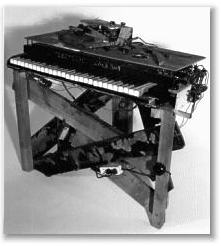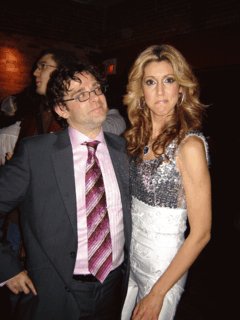I love anything keyboard related. I love the history or origins of all things musical. The history of the keyboard is something that I know very little about, so this next article is really for me … oh and for you guys too.
In the beer store the other day, I was in line and noticed the latest CHILL magazine. After picking it up and leafing through some of the pages, there was an article titled Voltage-Controlled Synthesizer.
The first thing that caught my eye was a picture of this vintage MOOG synth. It was made popular by the likes of Rick Wakeman and Keith Emerson. Way back in day, this thing looked like you could run a space ship with it!
The article was about a man named Hugh Le Caine, from Port Arthur. He was a physicist for the Canadian National Research Council in WW1. He then went off to Chalk River to work in the Nuclear reactor that was just starting up. It was the first one in Canada at the time.
 So during the War he was working on this futuristic, weird thing called the Electronic Sackbut. Where he got the name for this thing initially only God knows. Where in the world do scientists come up with these names?! Anyways, his invention is now recognized to have been the very first voltage-controlled synthesizer.
So during the War he was working on this futuristic, weird thing called the Electronic Sackbut. Where he got the name for this thing initially only God knows. Where in the world do scientists come up with these names?! Anyways, his invention is now recognized to have been the very first voltage-controlled synthesizer.
In 1945, when the first Sackbut was built inside a desk, Le Caine visualized an instrument in which the operator would control three aspects of sound through operations on the keyboard in three co-ordinates of space: vertical pressure was to correspond to volume; lateral pressure to pitch change; and pressure away from the performer to timbre.
Being a man who was known to have tickled the old ivories more then once in a while, you can see where this new thingy-mabober was going!
Keep on Jammin’


